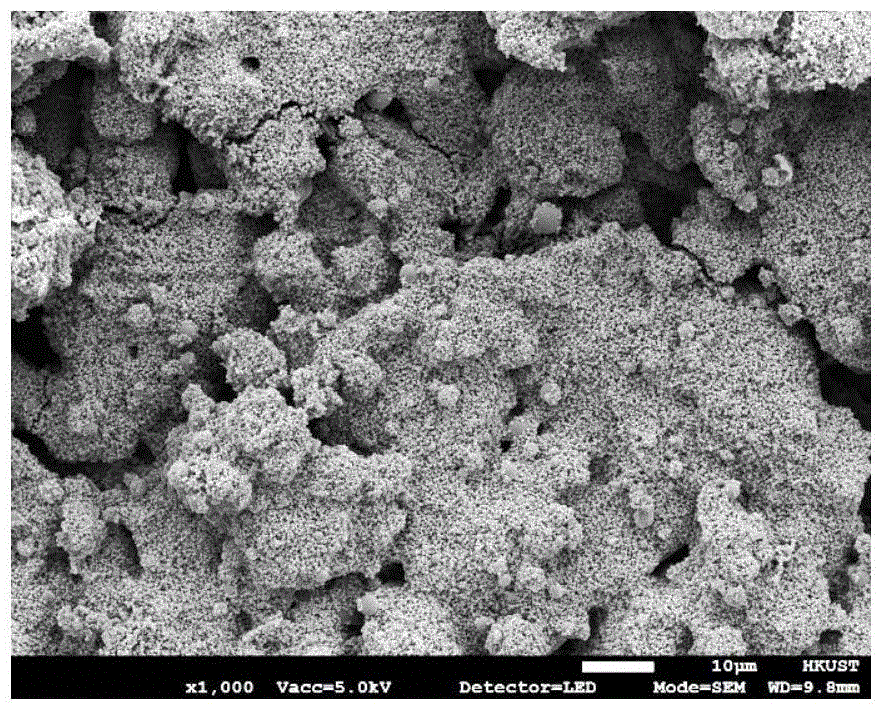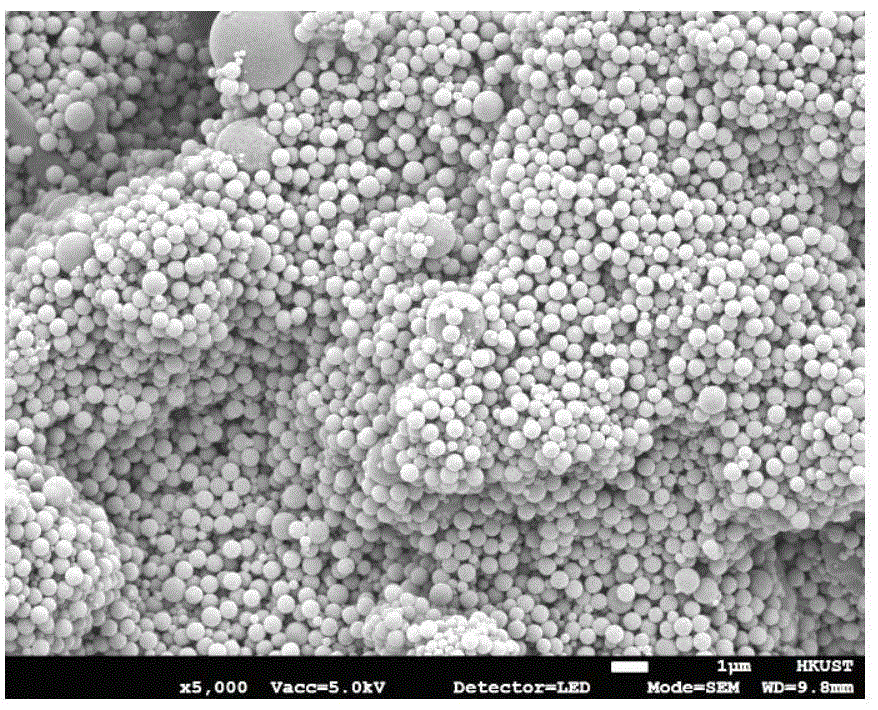Lithium ion battery with thermal sensitive layer
A lithium-ion battery and heat-sensitive layer technology, applied in the field of heat-sensitive layers, can solve problems such as short circuit, exposed electrodes, and diaphragm failure
- Summary
- Abstract
- Description
- Claims
- Application Information
AI Technical Summary
Problems solved by technology
Method used
Image
Examples
Embodiment
[0040] Polystyrene (PS) particles of 400 nm were dispersed in ethanol at a concentration of 1 wt%. The PS particle dispersion was coated on the graphite anode using a spray gun. Figure 2a with 2b is the SEM image of the PS particles coated on graphite anode and observed at close range. A uniform thermosensitive layer of PS particles completely covering the anode was prepared. After coating the polymer particles, the coated anode, cathode, PP / PE / PP three-layer separator, and LiPF 6 The electrolyte solution is used to make a pouch battery, in which a heat-sensitive layer is placed between the electrodes and the separator. A control pouch cell was similarly made without the polymer particle coating for comparison.
[0041] The pouch cell was first cycled at room temperature to verify cell performance. The voltage and current of the PS-coated pouch cell and the control cell were monitored over time, and their performance at room temperature was Figure 3a with 3b are shown...
PUM
| Property | Measurement | Unit |
|---|---|---|
| Average size | aaaaa | aaaaa |
| Average size | aaaaa | aaaaa |
| Thickness | aaaaa | aaaaa |
Abstract
Description
Claims
Application Information
 Login to View More
Login to View More - R&D
- Intellectual Property
- Life Sciences
- Materials
- Tech Scout
- Unparalleled Data Quality
- Higher Quality Content
- 60% Fewer Hallucinations
Browse by: Latest US Patents, China's latest patents, Technical Efficacy Thesaurus, Application Domain, Technology Topic, Popular Technical Reports.
© 2025 PatSnap. All rights reserved.Legal|Privacy policy|Modern Slavery Act Transparency Statement|Sitemap|About US| Contact US: help@patsnap.com



